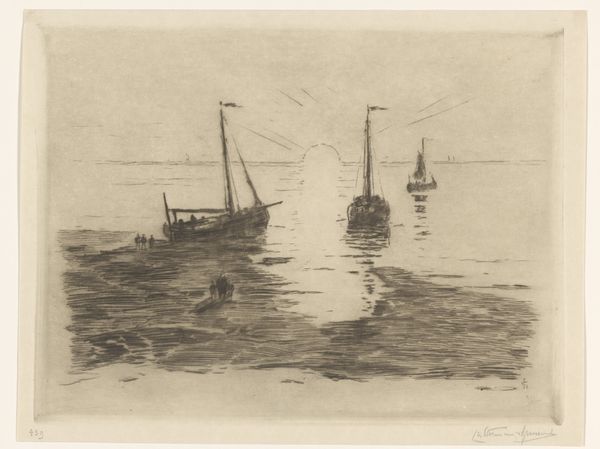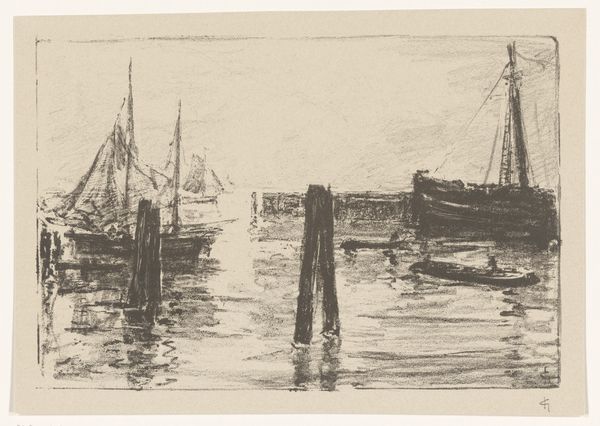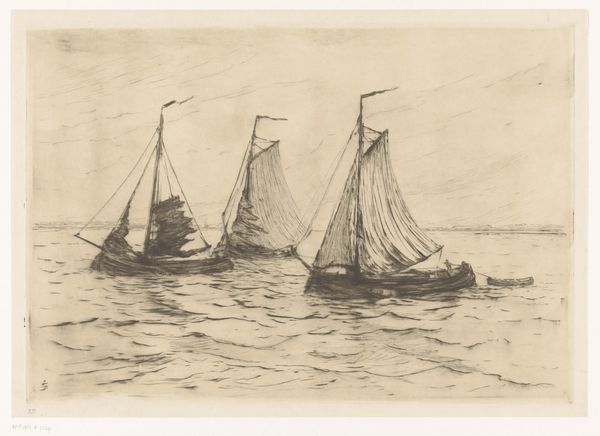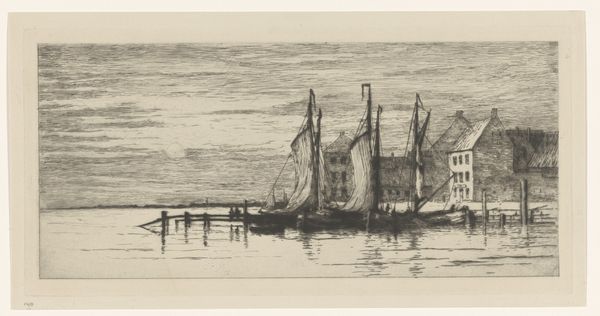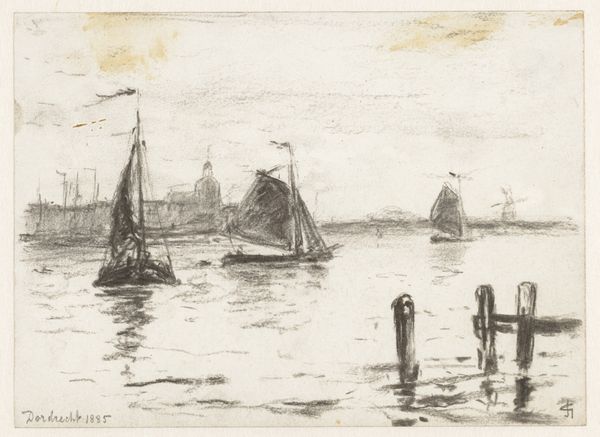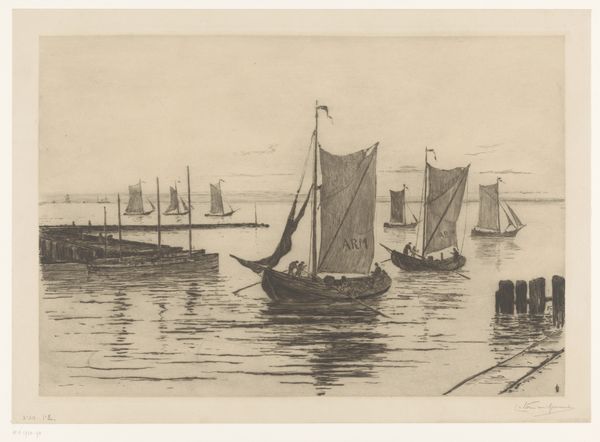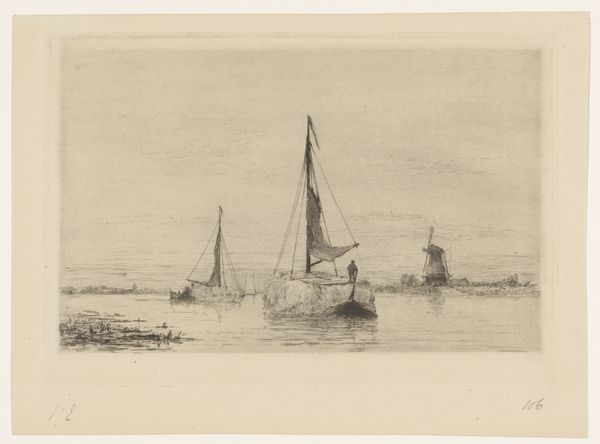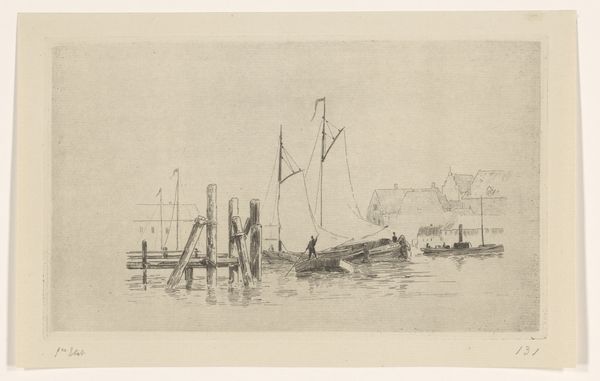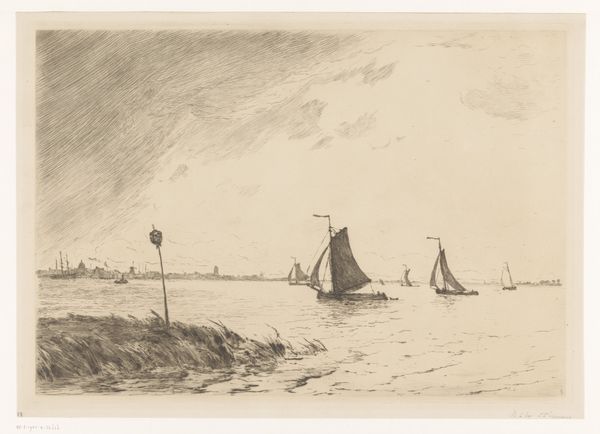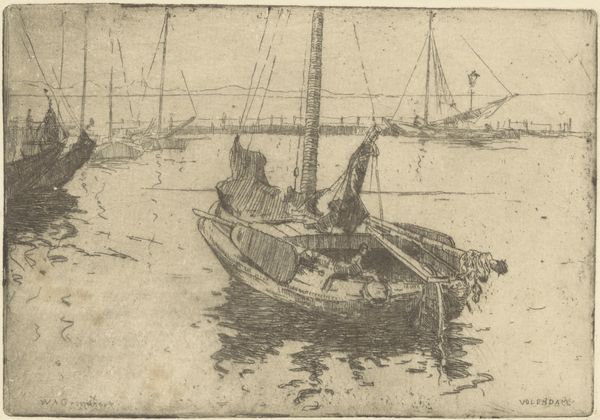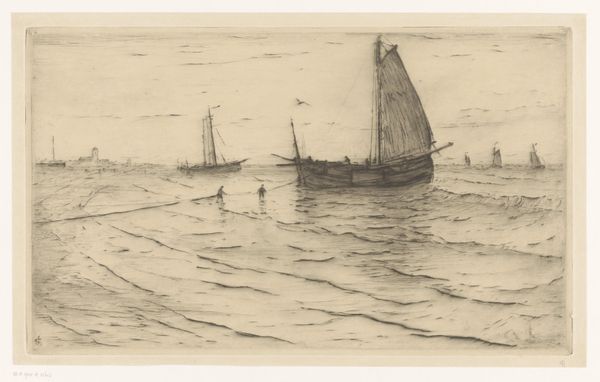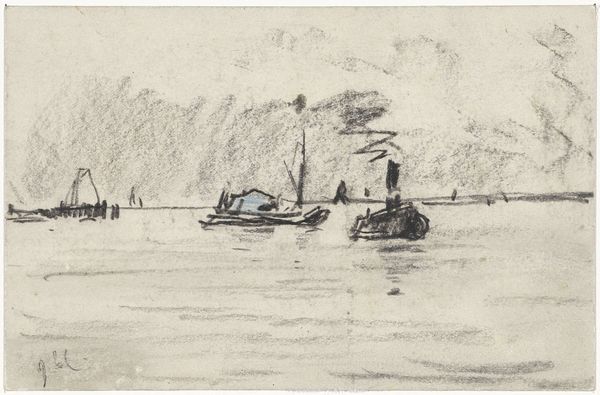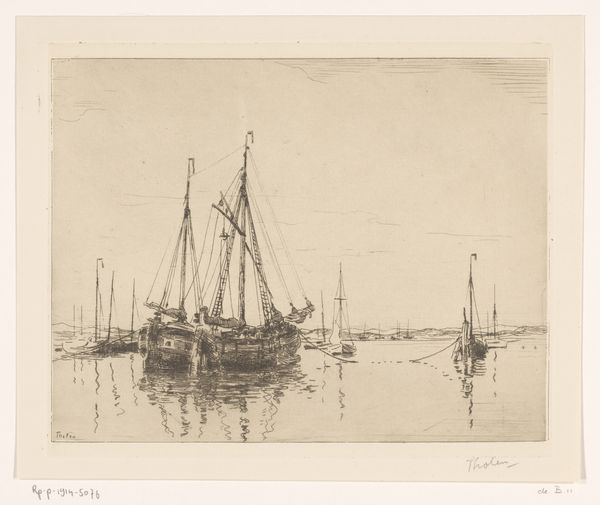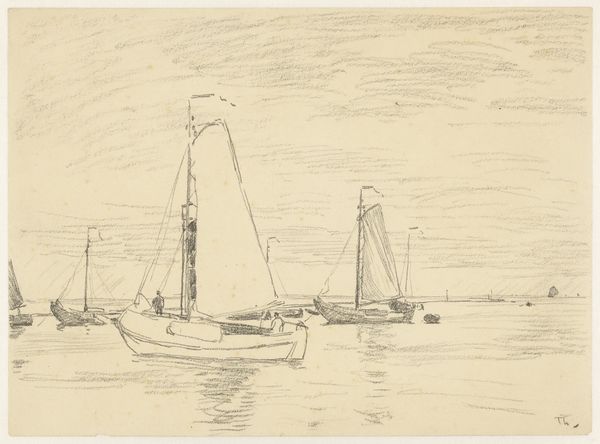
Zeilboten op de Zuiderzee bij Zeeburg 1889 - 1902
0:00
0:00
drawing, print, etching, ink
#
drawing
#
dutch-golden-age
# print
#
etching
#
landscape
#
nature
#
ink
#
realism
Dimensions: height 281 mm, width 423 mm
Copyright: Rijks Museum: Open Domain
Editor: This is “Zeilboten op de Zuiderzee bij Zeeburg,” a drawing and etching by Carel Nicolaas Storm van 's-Gravesande, made sometime between 1889 and 1902. It’s a landscape showing sailboats on the water. The texture and the medium make it feel quite somber, almost industrial. What can you tell me about it? Curator: This etching presents an interesting challenge to traditional notions of high art. We see the landscape, sure, but more importantly, we see the *process* of representing it. Consider the lines, the hatching, the deliberate marks that reveal the labor of the artist. Where do we draw the line between "fine art" and skilled craft in a piece like this, which feels mass-producible? Editor: I see what you mean. It feels like it could be reproduced easily, though it clearly took skill. Does the material used – the ink, the paper – factor into its interpretation for you? Curator: Absolutely! The materials themselves carry significance. Ink, often associated with documentation and reproduction, here renders a seemingly picturesque scene. And the paper? It’s the silent support, the substrate upon which this exchange between labor and landscape unfolds. Are we looking at nature, or at a statement about the act of *making* a picture? Editor: That’s a fascinating perspective. It really makes you think about the work involved and how the method influences our perception of the scene itself. Curator: Precisely. This etching isn’t just a pretty picture; it’s an artifact of labor, of material choices, and of a specific social context where the boundaries between art and industry were being actively negotiated. It makes you think of the labor involved in all these maritime activities too. Editor: Thank you. I’ve never really thought about an image in those terms before. Curator: It’s just a matter of perspective, viewing the materials and how they are used as just as significant as the images presented in order to extract greater context of time, place, and meaning.
Comments
No comments
Be the first to comment and join the conversation on the ultimate creative platform.
